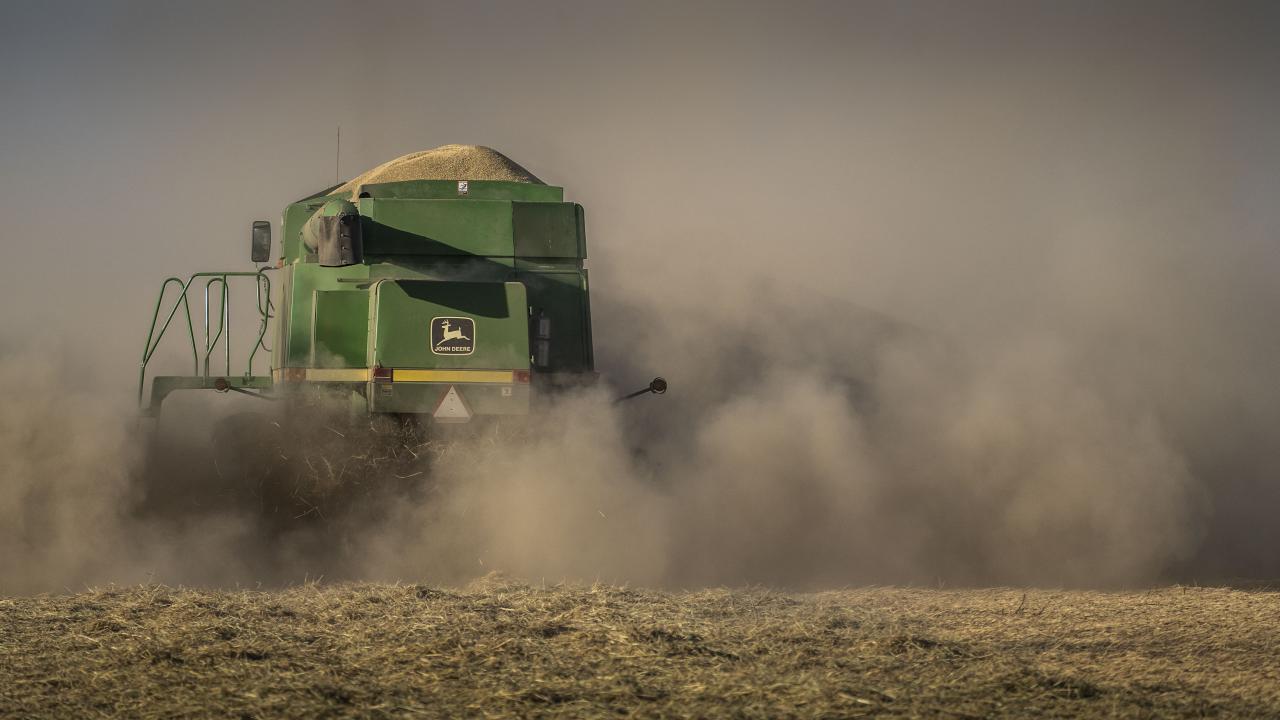
Research Highlight: Occupational Risk Factors for Valley Fever in California’s Farmworkers
This article summarizes the findings published in the article: “Risk for Coccidioidomycosis Among Hispanic Farmworkers, California, USA, 2018”, Journal of Emerging Infectious Diseases, Vol.26, No.7, July 2020.
Valley fever (coccidioidomycosis) is a fungal infection caused by inhalation of Coccidioides spores, which live in soil. Most infections are mild and resolve within weeks or months, but 40% of those infected experience flu-like symptoms, such as cough, fever, and fatigue that typically resolve without treatment. Approximately 1% of cases involve dissemination to skin, bone, and other tissues, which requires long-term antifungal therapy and may result in death.
Although the fungus can be found in dry regions across the southwestern United States, infections have surged in California in recent decades. Dust storms, earthquakes, wind, and activities that disturb the soil can release the spores into the air. The highest incidence of Valley fever cases in California has occurred in Kern County in the San Joaquin Valley, the most productive agricultural county in the nation, where soil disruption and exposure to agricultural dust are common.
Agricultural work has previously been identified as an occupational risk factor for Valley fever, but little research has been conducted to identify specific high-risk tasks or crops.
New Study Findings
In a recently published paper, former director of WCAHS outreach, Stephen McCurdy, MD, MPH, and colleagues describe their study, which aimed to test the hypothesis that exposure to dust is related to infection and identify specific tasks or crops in agricultural work that put farmworkers at increased risk of Valley fever. The findings were recently published in the Journal of Emerging Infectious Diseases in July 2020.
The research team used a case-control design, comparing a group of farmworkers with the disease to a control group without it. The study sample included 110 farmworkers with the disease and 93 controls. Researchers partnered with the Kern County Public Health Services Department to recruit agricultural workers to engage in an interview, undergo antibody blood testing, and report clinical symptoms. Interview questions addressed demographic characteristics, health history, frequency of outdoor work, crop or commodity, tasks, exposure to dust, and use of protective equipment or soil-wetting in dusty conditions. Researchers analyzed the responses by crop category and by task to identify any associations with the clinical characteristics of the disease.
Exposure to dust and working with root and bulb crops was associated with an increase in the odds of contracting Valley fever.
Results from the study confirm that exposure to dust is significantly associated with a near doubling of the odds of getting the disease. The odds of infection were increased nearly threefold for those who worked with root and bulb vegetable crops, such as beets, carrots, garlic, onions, radishes, and sweet potatoes.
People who worked with leaf removal (primarily used in grape cultivation) had a 60% reduction in their odds of getting the disease, possibly related to reduced direct contact with dust and dirt. Researchers also found that practices like wearing face coverings and bandanas or wetting the soil in dusty conditions resulted in modest (statistically nonsignificant) reduction of infection risk.
Analysis of clinical symptoms showed that the disease carries a significant health burden. Around 80 percent of the case subjects reported fatigue or weakness and an associated loss of work days. The observed median of 18.5 lost work days is approximately 10 percent of the average annual workdays of California farmworkers, representing a significant loss of income for workers and loss of productivity for farms.
The health burden of Valley fever warrants further research and targeted health education.
Based on the study findings, the researchers recommend additional research on exposure, including soil and air sampling during harvest and other phases of cultivation, especially for root and bulb vegetable crops. Cloth bandanas offer limited respiratory protection and the use of NIOSH-approved personal respiratory protections are recommended. Finally, because the farmworker population faces linguistic and cultural barriers to awareness of health risks and because of gender differences in the use of masks, McCurdy and his colleagues encourage educational campaigns on Valley fever targeting these demographics.
